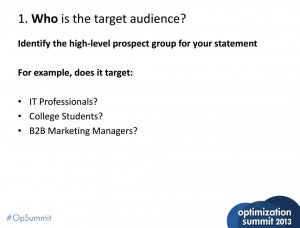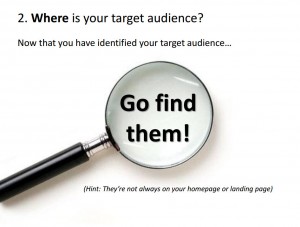Resources From the Latest MECLABS LiveClass: Answering your questions on Customer Theory, value propositions, and Customer-First Objectives
In the MEC200 LiveClass and MEC300 LiveClass for ChatGPT, CRO and AI: 40 Days to build a MECLABS SuperFunnel, we got a few questions in the chat. I’ll use this blog post to provide some resources to help you with those questions as you prepare for our next LiveClass on Wednesday
What is Customer Theory?
Is there an example of a fairly advanced custom theory profile? E.g., what’s the document or artifact and format, after multiple tests. Is Customer Theory an actual doc?
The Customer Theory is an understanding of the customer that enables us to more accurately predict the total response to a given offer. It is your organization’s collected wisdom about the customer. Hopefully this comes from a cycle of experiments. But at first, it may come from data analysis. Or even gut wisdom.
Here’s a document you can use to begin building your Customer Theory, adding to it over time as you test – Introductory Guide to Developing Your Customer Theory [an interactive worksheet].
This article provides an example – Customer Theory: How to leverage empathy in your marketing (with free tool).
And this document can help you organize all the discoveries from your marketing experiments to discover patterns that will inform your customer theory – Get Your Free Test Discovery Tool to Help Log all the Results and Discoveries from Your Company’s Marketing Tests
The Four Levels of Value Propositions for Landing Pages
Do all landing pages have all four value propositions?
The four levels of value proposition are:
- Primary value proposition (overall company)
- Prospect-level value proposition
- Product-level value proposition
- Process-level value proposition
A successful landing page will tend to focus on one of these levels of value proposition, but have other elements as well. It’s like the 80/20 rule – 80% of your landing page will focus on one level, and the other 20% will support it with the other three levels.
For example, if you created a landing page for the Tesla Model S, the main thrust of your landing page would be a product-level value proposition. But you would also work in Tesla’s primary value proposition (perhaps showing Tesla’s charging network), prospect-level value propositions (perhaps showing why it is a good fit for a prospect focused on being environmentally conscious as well as a prospect interested in a sports car), and a process-level value proposition (perhaps there would be CTAs to sign up for a test drive, explaining the value of that process).
Keep in mind, that the landing page is also a great place to test your value proposition and further inform your Customer Theory (although not the only place, as we discuss in Value Proposition Testing: 64% of marketers say landing pages are most effective.
Customer-First Objectives (CFO) Framework
I missed the first 30 minutes, what are CFO again?
The CFO is your Customer-First Objective, a three-part framework for focusing your webpage and marketing messaging developed by Flint McGlaughlin, the founder of MECLABS Institute. This framework is an attempt to bring discipline to marketer’s approaches to their landing pages and messaging BEFORE they start to create their funnels, to make sure their funnels put the customer first.
Many marketing leaders intuitively understand the importance of putting the customer first. It is a common topic on the How I Made It In Marketing podcast. For example, when I interviewed Michelle Huff, CMO, UserTesting, she had discussed many stories with lessons that focused on understanding other people – like “Utilize customer empathy when trying to involve the customer in marketing efforts” and “Marketers should get involved with the sales team to learn from them” (you can hear our discussion in Product Management & Marketing: Surround yourself with the right people (podcast episode #38).
The MECLABS CFO framework helps discipline and codify that focus on understanding our customers, and uses it to inform all funnel creation activities.
Do you have any examples of a CFO that I can reference or do you recommend going back and reviewing the FastClasses?
You can check out FastClass #5 – Customer-First Objectives: Discover a 3-part formula for focusing your webpage message – and FastClass #6 – Customer-First Objectives Application Session: See real webpages optimized for marketing conversion.
Also, if you download the PDF copy (no form fill required) of The Way of the Marketer (in Chaos): A Path through the complexities of the AI Revolution, the cover has a CFO created by Flint.
Join Us for the Next LiveClass
You can RSVP here to join us for a Wednesday LiveClass. Here’s some feedback from current attendees to give you an idea what you can experience in these LiveClasses…
“…being able to come here and learn the ‘why’s’ behind things and getting the understanding has just been, like, life changing…and that was not a paid testimonial…” – Kristi Linebaugh, Sales and Marketing Specialist, Vigoa Cuisine. Hear directly from Kristi in this 51-second video.
“…My stress level has gone down because this is tough stuff…And Flint you’ve mastered all of this and it’s so nice to have access to this and you’ve been so gracious with your time and, well, what a generous soul…” – David B. Justiss, Agency Owner, Social Ink Works LLC. Hear directly from David in this 52-second video.
“…you said something very profound, and I’ve never heard this in the entire time of the Cohort yet. And it’s spot on to why we have the Cohort, why we need the Cohort, why the Cohort’s been so valuable as a community to us and I’m going to presume for so many, but it was something to the effect – be aware of incremental improvements to the wrong offer…” – Paul Good, Chief Executive Officer, PhotoPros, in this 58-second video












